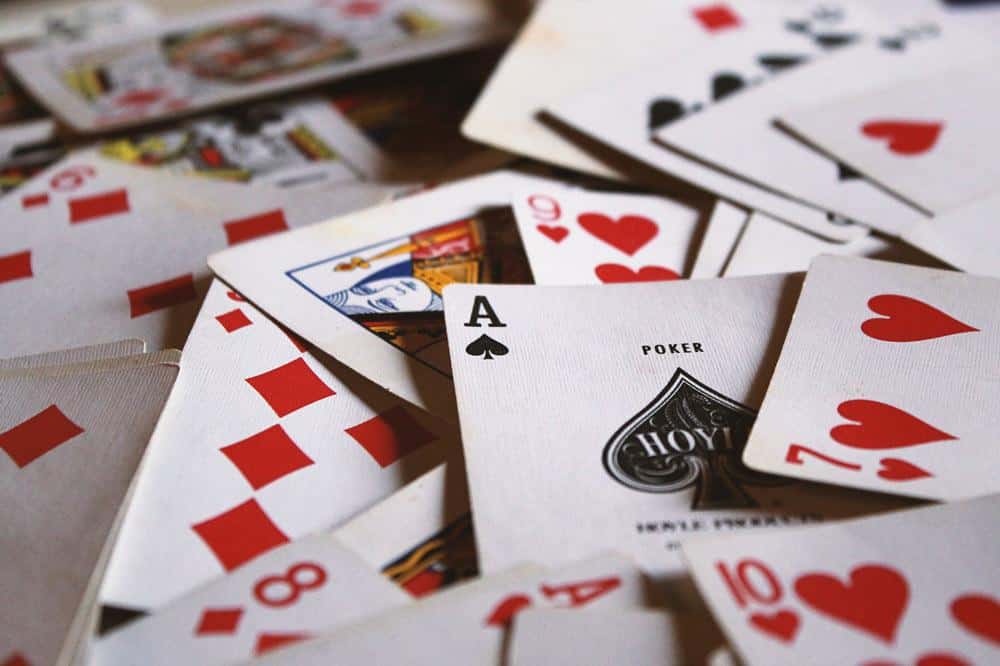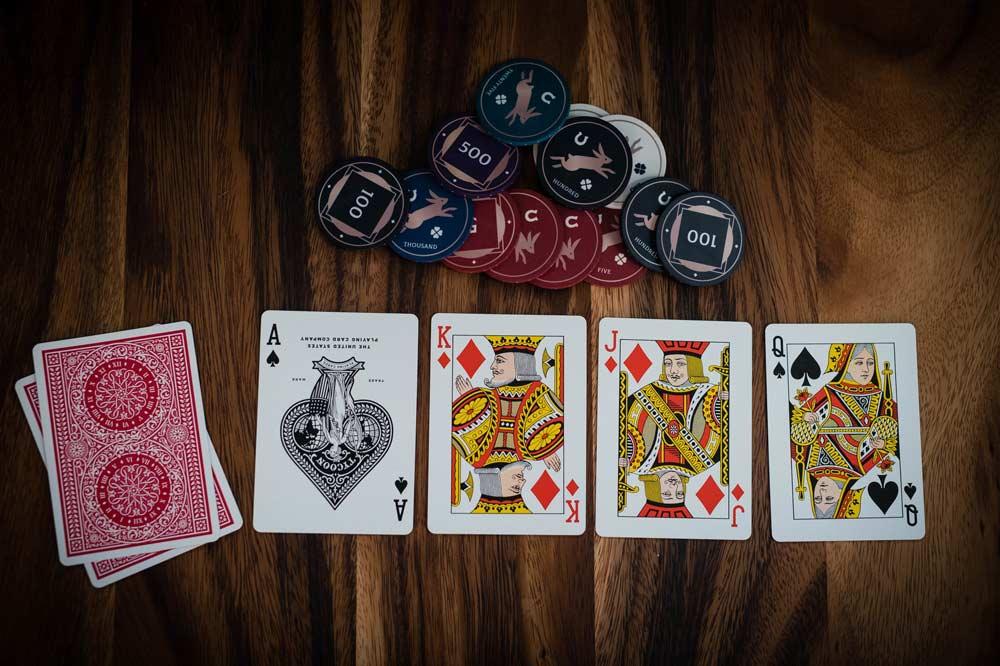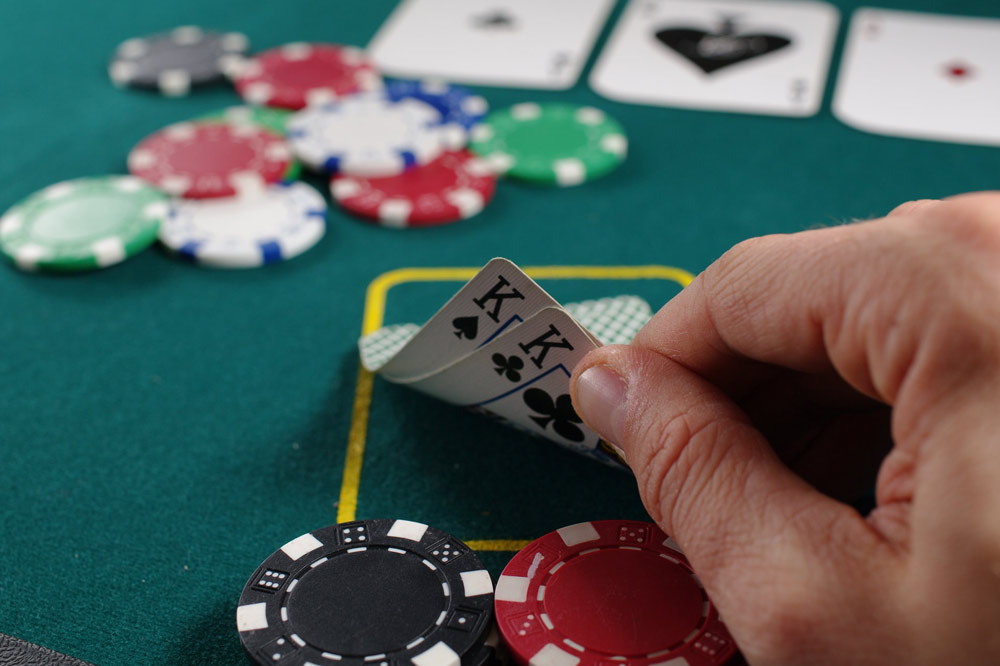For poker lovers worldwide, bluffing is a critical weapon in their armoury; they use it to gain a psychological edge over their opponents.
Bluffing is a high-risk strategy that players use to dominate their opponents and get the upper hand, especially in situations where the person doesn’t have a particularly strong hand. The trick is to convince your opponents that your hand is a winning one when, in actuality, it is pretty ordinary.
When searching for the best crypto casino, poker players often look for ones that offer variations of poker that allow them to use this strategy. While the art of bluffing may take a while to master, it certainly is satisfying when your bluff comes off at the table. For gamblers relatively new to this concept of bluffing, it is best to practice with smaller stakes to build your confidence.
When it comes to the ideal bluff, timing is everything. Players who use this strategy should decisively raise their bets during the round to compound the pressure on their opponents and coax them into folding their hands.
While this technique is not always successful, it can boost your chip stack and give you the best shot at winning your round and, ultimately, the game. Read on as we discover how to bluff in poker.
Dynamics Of A Great Bluff
When playing poker, be aware that while you aim to use your bluff effectively, everybody else at the table is probably trying to use the bluff. Learning to trick your opponents without letting them fool you more often is the key to success at the table.
The game’s rules mainly depend on the cards you are dealt. But your bluffing strategy is not determined by the cards in your hands but rather by your opponent’s perception of the strength of the cards you hold.
There are many instances where players are dealt poor hands, so a great bluff would have your opponents believe that your cards are much stronger than they are. If your bluff is convincing enough, that should be sufficient for your opponents to fold in submission and give you the pot.

However, you must portray confidence, as the slightest hesitation may alert the table to the fact that you are pretending, which may cost you the round.
Bluffs can also work tremendously in your favour when you have a strong hand. In this case, you will want to convince your opponents that your hand is not strong in an effort for them to load up the pot. Once the bank starts to grow and players have committed to that pot, it will be difficult for them to fold, and you are then in a fantastic position to dictate the order of play.
However, you must be careful with being too aggressive as your opponents will suspect the strength of your hand and fold before the pot grows to a decent amount.
How To Bluff In Poker
Figuring out how to bluff in poker requires a player to be aggressive at the table. While each person’s personality dictates their playing style, it is somewhat coincidental that the aggressive players at the table usually win – as they say, “Fortune favours the brave!”
By displaying aggressiveness, their round will end in one of two ways.
Either they will produce the best hand after the river at the showdown.
Or they will force their opponents into submission with big bets and collect an uncontested pot.
Of course, this measure of aggression at the poker table should be used at appropriate times instead of hell for leather betting and hoping for the best.
Things To Consider When Bluffing
It is essential to consider the following before you try to bluff your opponents:
Table Dynamics
You must ensure that you have the proper dynamics at the poker table for your strategy to succeed. This includes the type of players at your table, the player’s position, the size of opponents’ chip stacks, and their confidence levels. All of these factors will determine how frequently you try to fool your fellow players.
Stakes During The Round

When thinking about bluffing, consider the stakes level in that round.
Rounds of smaller stakes provide the perfect platform for your opponents to gauge the table, and they are more willing to match your bets as they appear to be more call-happy. However, when the stakes increase, it provides more balance and perspective. In light of this, your opponents may be wary of your aggressiveness, and you should find more joy.
Number Of Opponents
While there is no hard and fast rule about the number of opponents at your table when bluffing, it is much easier to succeed when you have fewer opponents. Fewer players mean fewer opportunities to get caught out, especially if you are bluffing with a weak hand.
Timing Is Everything
The image you portray could work to your advantage or disadvantage, depending on how selective you are with your bluffing. Suppose you appear to be overly aggressive or have been caught bluffing in recent times. In that case, that memory will be fresh in your opponents’ minds, and they may show confidence in matching your aggressiveness in the following rounds.
Opponents’ Behavior
It is also vital to observe your opponents’ image and habits.
For those who are fond of calling, it is not wise to use the bluff on them as you may get sucked into a heavy loss. On the flip side, those who are fond of folding their hands are the ones you should be targeting for your bluff.
Keep an eye out for poker tells that act as signs to indicate the strength of your opponent’s hand. It could be involuntary movements or signals that a player will show unconsciously.
In the same light, you should try your best to hide your poker tells from your opponents. While playing at a crypto casino is easier as you cannot physically see your opponents, their tells could surface in the time they take to make decisions.
Bankroll
Always consider your bankroll and the bankroll of your opponents before using the bluff, as this could backfire on you if you have a short stack. A short-stack aggressive player is a sign of a desperate player who wants to recover their chips, and this could work into your opponent’s hands if you are not careful.

Six Great Bluffing Strategies
1. Stone Cold Bluff
Stone cold bluffs are also referred to as total bluffs, and this is relevant when you don’t see your cards adding any value during any stage of that round.
Bluffing with this strategy is risky and can let the cat out of the bag if caught early enough. Skilful players usually try this strategy to gauge their influence over the table and are pretty convincing in pulling it off.
An aggressive streak is required to force your opponents into submission, and you must appear confident that your cards will win that round. Overreacting and showing off may signal that you are lying, so it is essential to remain calm and focused.
For poker newbies who don’t know this tactic, it is best to fold when you have a poor hand, as you may just give away your secrets before having a chance to use them properly.
By folding your hand, you can have a decent chance of a bluff without others at the table detecting it. Bluffing on every hand will not work either, as players with stronger hands will quickly be onto your tricks.
2. Semi-Bluff
A semi-bluff is a basic type of bluffing but offers more reliability when compared to the stone-cold bluff.
With a semi-bluff, your hand has a realistic chance of winning, provided the dealer lays down some favourable cards. With semi-bluffs, you have an outlet as your bluff could conceivably land you a win without forcing other players into submission.
There are many instances where other players are in the same situation as you, so you have nothing to lose by using the semi-bluff to get the upper hand. Semi-bluffs are used chiefly by experienced players, and newbies should stick to honest hands until they learn the right time to semi-bluff.
3. Quick Bluff
Players typically use a quick bluff when the table is lukewarm and nobody appears to be running away with a winning combination.

It’s akin to testing the waters to see who is invested in that round. A sizeable aggressive bet is usually enough to scare away the pretenders from the genuine contenders and is an excellent strategy to mop up quick pots in indecisive rounds.
Quick bluffs are great for those small-pot hands that don’t appear to be going anywhere and are usually used in tournaments and professional games.
4. Continuation Bet
A Continuation bet is where you bet aggressively after the flop to convince your opponents that the flop has unlocked a powerful combination for you. Maintaining your image of having a strong hand after the flop is sure to make your opponents doubt the value of their hands and will likely result in the folding in submission.
For this bet to appear convincing, it is wise to have betted big in the pre-flop phase to signal to your opponents that you did have strong cards to start with. The important thing is to follow up with your aggressiveness, as any hesitance after your initial enthusiasm will be viewed as a sign of weakness that your opponents will exploit.
This is not the strategy for every hand, as your opponents will soon realise that you are not being truthful and will take advantage. Seasoned players usually reserve this tactic when one or two remain at the table.
5. The Check-Raise Bluff
The Check-Raise Bluff is quite a risky bet but can be profitable if you are dealt a strong hand. Players are usually convinced that these are the best possible cards for that hand, so this bluff has a strong element of authenticity.
For this tactic to work, you should convince your opponents that your cards are poor, so they are encouraged to bump up the pot.
When you Check-Raise, some of your power and control is handed over to your opponents, especially those who feel they have a strong hand.

Your first check gives your opponent the belief that they are in a stronger position than you as you appear to have lost confidence. This should encourage them to raise the stakes in the hope that you will surrender your cards. At this moment, you raise your stakes significantly and seize control of the table. Your aggressiveness at the end should be enough to scare them into submission and leave you taking a healthy pot.
6. Post-Oak Bluff
This tactic is a low-risk bluff where you make small bets to encourage others to match your bet and build the pot. Players will either match or slightly raise their bets to ensure that the pot is attractive enough for that round. It is used by seasoned professionals who find more value in bigger pots and can be used effectively to exploit the naivety of novice players at the table.
The trick to bagging this round is to land a good combination anywhere during that round. Then, raise the stakes aggressively after the river is displayed. That is usually enough to force your opponents into submission and leave you with the winnings.
Final Thoughts
While bluffing is a great strategy to use at a poker table, you must use it at appropriate times to maximise its effect. The timing and frequency of your bluffs will determine your success when trying to fool your opponents.
By using it too often, the other players will realise that you are taking chances, and the more experienced players will look to exploit that weakness in your gameplay.
Your gameplay should involve skill and strategy and your ability to observe and manipulate your opponents to your advantage. Employing solid bluffing will undoubtedly help you on your quest to conquer the table.















